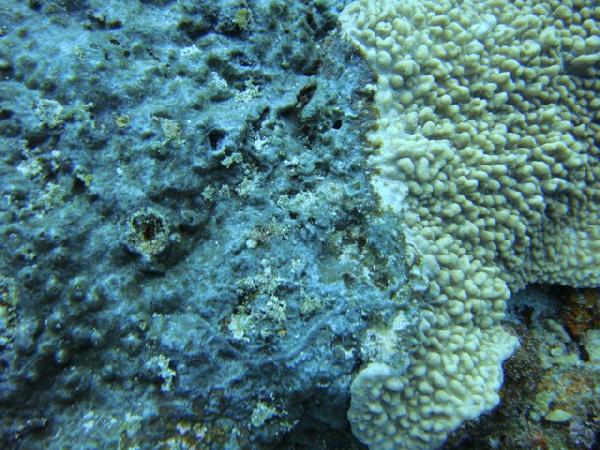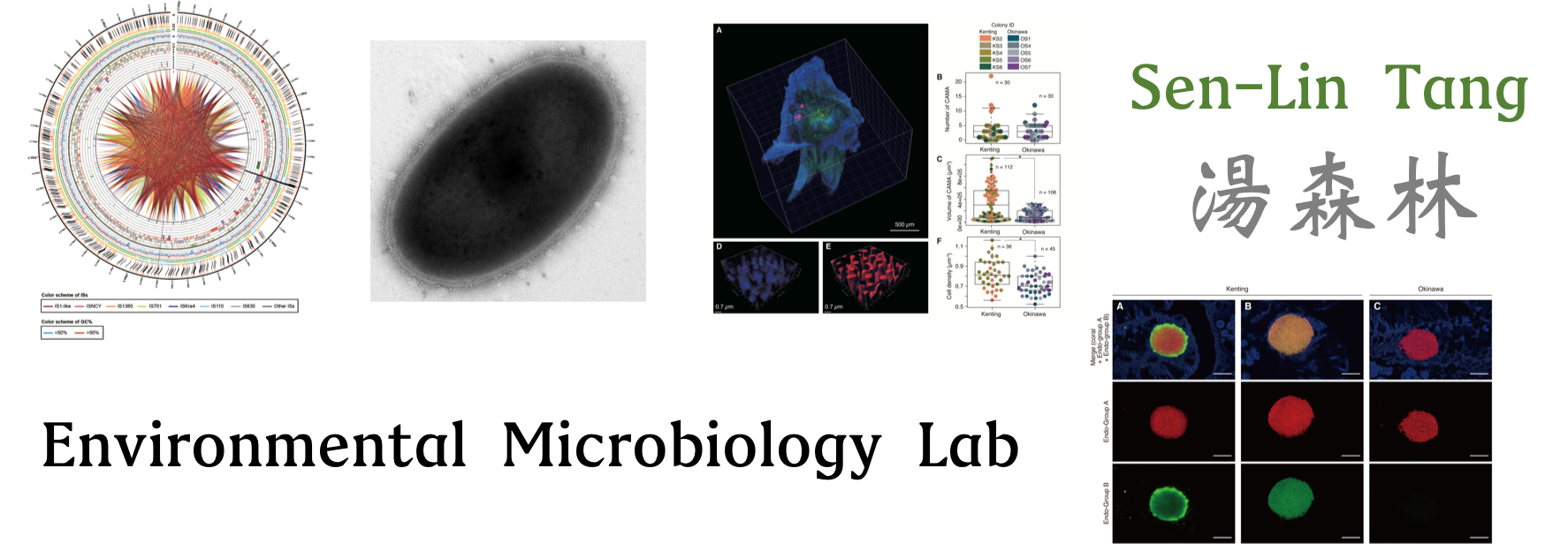Ongoing Project
Last update: 2012-10-09
Investigation into the biology of the cyanobacteria in Terpios hoshinota in Green Island, South Taiwan
Researchers:
Sen-Lin Tang, Ming-Hiu Lao, Mei-Jhu Hong and Allen Chen
Introduction:
 Terpios hoshinota, a dark encrusting sponge, is known to be a competitor for space in coral reef environments, and facilitates the death of corals. Although numerous cyanobacteria have been detected in the sponge, little is known of the sponge associated bacterial community. This study examined the sponge-associated bacterial community and the difference between the bacterial communities in the sponge and the coral partially covered by the sponge by analysis of 16S rRNA gene sequences of samples isolated from the sponge covering the corals Favia complanata, Isopora palifera, Millepora sp., Montipora efflorescens and Porites lutea. The sponge-associated bacterial community was mainly (61–98%) composed of cyanobacteria, with approximately 15% of these alphaproteobacteria and gammaproteobacteria, although the proportions varied in different sponge samples. The dominant cyanobacteria group was an isolated group closely related to Prochloron sp. The comparison of the bacterial communities isolated from sponge-free and the spongecovered P. lutea showed that covering by the sponge caused changes in the coral-associated bacterial communities, with the presence of bacteria similar to those detected in black-band disease, suggesting the sponge might benefit from the presence of bacteria associated with unhealthy coral, particularly in the parts of the coral closest to the margin of the sponge.
The partial result has been published on Environmental Microbiology, 2011 (Tang et al., 2010).
We are now working on metagenomics and genomics of Terpios hoshinota. Hopefully this molecular approach can provide insights into physiology and biochemistry of the sponge and its bacterial symbion.
Terpios hoshinota, a dark encrusting sponge, is known to be a competitor for space in coral reef environments, and facilitates the death of corals. Although numerous cyanobacteria have been detected in the sponge, little is known of the sponge associated bacterial community. This study examined the sponge-associated bacterial community and the difference between the bacterial communities in the sponge and the coral partially covered by the sponge by analysis of 16S rRNA gene sequences of samples isolated from the sponge covering the corals Favia complanata, Isopora palifera, Millepora sp., Montipora efflorescens and Porites lutea. The sponge-associated bacterial community was mainly (61–98%) composed of cyanobacteria, with approximately 15% of these alphaproteobacteria and gammaproteobacteria, although the proportions varied in different sponge samples. The dominant cyanobacteria group was an isolated group closely related to Prochloron sp. The comparison of the bacterial communities isolated from sponge-free and the spongecovered P. lutea showed that covering by the sponge caused changes in the coral-associated bacterial communities, with the presence of bacteria similar to those detected in black-band disease, suggesting the sponge might benefit from the presence of bacteria associated with unhealthy coral, particularly in the parts of the coral closest to the margin of the sponge.
The partial result has been published on Environmental Microbiology, 2011 (Tang et al., 2010).
We are now working on metagenomics and genomics of Terpios hoshinota. Hopefully this molecular approach can provide insights into physiology and biochemistry of the sponge and its bacterial symbion.